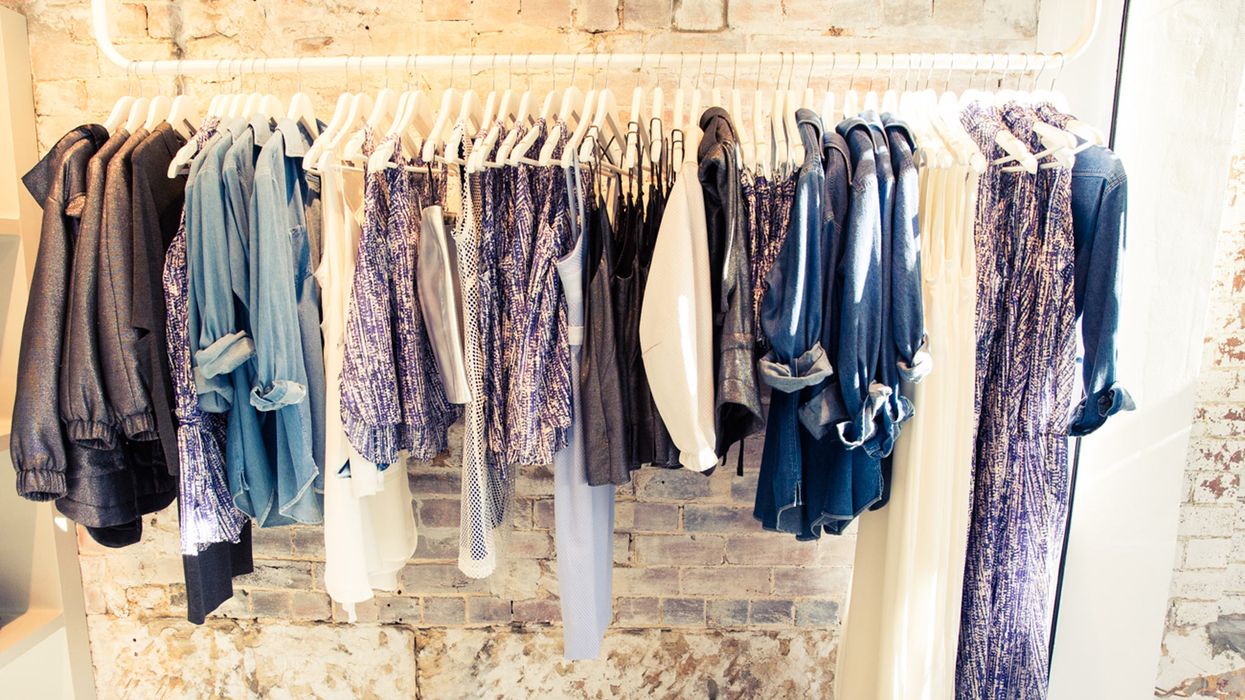Check Out the Latest Patterns in Boutique Fashion for every single Period
Check Out the Latest Patterns in Boutique Fashion for every single Period
Blog Article
Sustainable Fashion: How Eco-Friendly Apparel Is Shaping the Future of Style
As the fashion sector faces enhancing examination over its ecological influence, the rise of sustainable fashion uses an encouraging choice that straightens design with eco-friendly responsibility. boutique fashion. How does this motion truly influence the future trajectory of fashion, and what difficulties exist in advance in its widespread fostering?
Ingenious Sustainable Products
As the garment industry faces its environmental influence, ingenious sustainable products have become an essential option for reducing eco-friendly footprints. Amongst the most encouraging materials are those acquired from natural, eco-friendly sources, such as natural cotton, hemp, and bamboo. These materials not just minimize dependency on fossil gas yet also reduce hazardous pesticide use and water consumption. Organic cotton, for example, utilizes considerably less water than standard cotton and removes the requirement for hazardous chemicals, therefore preserving soil health and biodiversity.
Along with plant-based products, improvements in biofabrication have caused the development of lab-grown textiles. Mycelium leather, derived from mushroom roots, provides a versatile and eco-friendly option to animal natural leather. Its manufacturing causes considerably reduced carbon exhausts and water usage, making it an extra sustainable choice for designer seeking to straighten with environment-friendly practices.
Recycled materials are likewise getting grip, with polyester made from recycled plastic containers representing a considerable development. This technology not just diverts plastic waste from seas and landfills however likewise minimizes energy consumption compared to generating virgin polyester. With each other, these materials underscore the potential for a more sustainable fashion business, leading the means for environmentally conscious design and production.
Eco-Conscious Manufacturing
Building on the technologies in lasting products, the style sector is also re-evaluating its production procedures to even more lower environmental impact. Trick strategies include decreasing water intake, decreasing carbon exhausts, and getting rid of dangerous chemicals. By adopting closed-loop systems, suppliers intend to reuse water and energy effectively, substantially decreasing waste. The assimilation of renewable resource resources, such as solar and wind power, into manufacturing centers better curtails reliance on fossil gas.
One more essential aspect is the reduction of hazardous chemicals generally utilized in coloring and completing textiles. Eco-conscious producers are changing in the direction of plant-based dyes and waterless dyeing technologies, which not only secure local communities however also improve employee safety and security. Technologies like digital printing reduce textile waste and energy consumption, offering a cleaner option to conventional approaches.
Additionally, transparency and traceability have become extremely important. With the advancement of blockchain technology, companies can now supply thorough insights right into their supply chains, guaranteeing moral and ecologically pleasant practices at each action. This openness constructs customer trust and urges brand names to preserve high sustainability requirements. As the demand for eco-conscious products expands, makers are urged to innovate, ensuring that the future of style is both sustainable and elegant.
The Surge of Upcycling
Upcycling, a transformative technique in sustainable style, entails creatively repurposing disposed of products right into new, high-grade items. This innovative approach not only reduces waste however additionally lessens the need for basic materials, like this thereby reducing the ecological effect of clothes production. By rebuilding and reimagining existing items, developers and fashion brand names are able to infuse creativity into their collections while advertising environmental responsibility.

Moreover, the upcycling motion has empowered tiny services and independent designers, that often lead in development as a result of their dexterity and creative thinking. By maximizing the abundant availability of extra materials, these entities add to a round economic climate, showing that style can be both lasting and fashionable. With upcycling, the industry takes significant strides in the direction of a much more responsible and aware future.
Thrift Culture's Influence
The blossoming thrift society considerably reshapes the landscape of lasting fashion, emphasizing the value of mindful intake. This cultural change motivates customers to accept used apparel, consequently minimizing the need for new garment production and reducing ecological impact. Thrift purchasing not just extends the lifecycle of clothes however also lowers the carbon footprint connected with manufacturing, carrying, and taking care of garments.
A crucial element of second hand culture is its democratization of style. By providing a vast variety of designs from numerous ages at cost effective costs, thrift shops make fashion accessible to a wider audience. This availability cultivates a feeling of originality and creative thinking, as consumers mix and match distinct pieces to curate individualized closets without contributing to the fast style cycle.
Furthermore, thrift society advertises circularity in style, lining up with the principles of a circular economic climate. By recirculating garments, the cycle of waste is interrupted, and sources are conserved. This practice supports a change from a direct "take-make-dispose" design to a much more lasting structure. As more consumers and designers embrace thrift society, the fashion business is forced to adapt, incorporating lasting practices to satisfy the growing demand for eco-conscious choices.

Future Trends in vogue
Style's evolution is progressively formed by technological technologies and sustainability-driven initiatives. As customers become extra eco mindful, the industry is responding with groundbreaking innovations that redefine the future of design. One famous pattern is the rise of digital fashion, where digital garments can be worn in enhanced truth environments, considerably decreasing fabric waste. This change not just deals with the digital-savvy consumer but additionally lessens the environmental impact typically connected with garment production.
Additionally, the integration of blockchain modern technology supplies new possibilities in more helpful hints transparency and traceability, permitting customers to confirm the sustainability credentials of their apparel. boutique fashion. This makes certain accountability in supply chains and advertises honest sourcing practices. 3D printing is yet one more advancement that guarantees to reinvent manufacturing procedures by making it possible for on-demand production, thus look at this now reducing excess inventory and waste
As these innovations develop, they are poised to change the style landscape, merging style with sustainability. The future of fashion, consequently, lies in a smooth mix of technology, development, and ecological duty.
Conclusion
The transformation of the fashion sector with lasting techniques indicates a pivotal change in the direction of ecological liability. This development not only straightens fashion with eco-friendly sustainability however additionally establishes a precedent for future patterns concentrated on duty and development.
As the fashion market encounters boosting examination over its ecological influence, the rise of lasting style uses a promising choice that aligns style with environmental duty.As the fashion sector grapples with its ecological influence, ingenious lasting products have actually arised as a crucial service for decreasing ecological footprints. Together, these products underscore the potential for an extra lasting style sector, paving the way for ecologically aware design and manufacturing.
Building on the developments in sustainable materials, the style sector is additionally re-evaluating its production processes to additionally minimize environmental impact. boutique fashion.Upcycling, a transformative technique in sustainable fashion, entails creatively repurposing thrown out materials right into new, high-quality products
Report this page